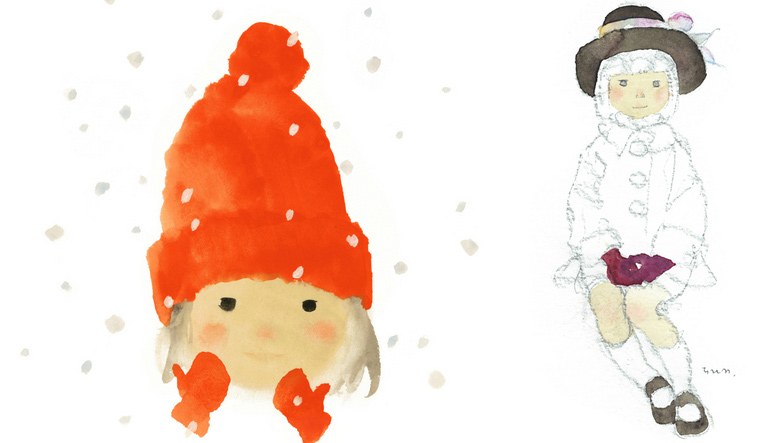In Oniroku and the Carpenter, a skilled bridge-builder's life is on the line when he is threatened by an ogre from the depths of a river connecting two villages. The ogre builds a bridge which doesn't collapse unlike previous bridges, much to the surprise of the builder. The ogre has won the challenge and wants his price. He tells the builder-carpenter to guess his real name or risk losing his eyes. The builder spends a harrowing night in the forest, trying to figure out the ogre's name. Does he manage to?
This Japanese folk tale comes alive as a 1962 picture book illustration by Suekichi Akaba in an delightful exhibition Chihiro Iwasaki and Picture Books of Japan at The Japan Foundation in New Delhi.
The exhibition abbreviates the centuries-old tradition of Japanese picture books for children in a limited series of images drawn right from the days of woodblock print books of the Edo period (1603-1868) called Ezoshi to the contemporary artists of children's books like Suekich Akaba, Shinta Cho, Yasuo Segawa, and of course, Chihiro Iwasaki, perhaps the most well known name in the canon right now. Japanese artist and illustrator Iwasaki, who died in 1974, is so popular for her soothing, minimalist watercolours of flowers and children that there are two picture book museums dedicated to her name—The Chihiro Art Museum Tokyo and Chihiro Art Museum Azumino. One of her favourite authors, not surprisingly, was the popular Danish writer of fairy tales Hans Christian Andersen.
Today the museum's international collection hosts works of picture-book stalwarts from 33 countries, covering some 203 artists with 17,300 pieces, making it one of the largest picture book collections in the world, offering a 360-degree compass of children's art. The prints at the ongoing exhibition have been loaned from the Chihiro Art Museum. One cannot help but think about the rich tradition of Indian illustrators for children's books and how little has been done to preserve and propagate their works.
Tucked in the basement of The Japan Foundation, you will meet Pontaro from the 1998 Shinta Cho print of Pontaro, the Boy with a Bouncy Head. Pontaro's head is made of rubber and is bounced around like a volleyball by tree trunks, against mountain-tops and the horn of an irritated giant. Not for nothing was Cho considered the pioneer of "nonsense picture books". There is child prodigy Gorsh the Cellist practising furiously for a concert with cats and rabbits and owls for company from a 1956 print by Takeshi Motai (1908-1956), considered one of the greatest picture book authors of the Showa era, a time of war, occupation and social upheavals in Japan.
To get a taste of some antiquity, you can sample a 1775 print from the first ever kibyōshi, an illustrated storybook with a yellow cover meant for the common people or a 1778 Ehon (picture) nature book in woodblock prints with intricate sketches of dahlias, birds, insects and entwining ivy-like stems.
But come to the pictures by Chihiro Iwasaki for good old comfort food: for charming portraits of cobbled roads, a girl with apple cheeks smiling in a red woollen cap, yet another demurely poised girl in a brown hat with her hands on her lap or a happy procession of first graders with satchels around their backs.
At the World Book Fair in New Delhi this year, a bilingual edition (Hindi-English) of Japanese picture book Mottainai Grandma was released for the first time. The character of Mottainai Grandma teaches children to adopt an eco-friendly lifestyle. The first book in the series will soon be translated into 11 regional languages.
Chihiro Iwasaki and Picture Books of Japan is on view till 12 June.


